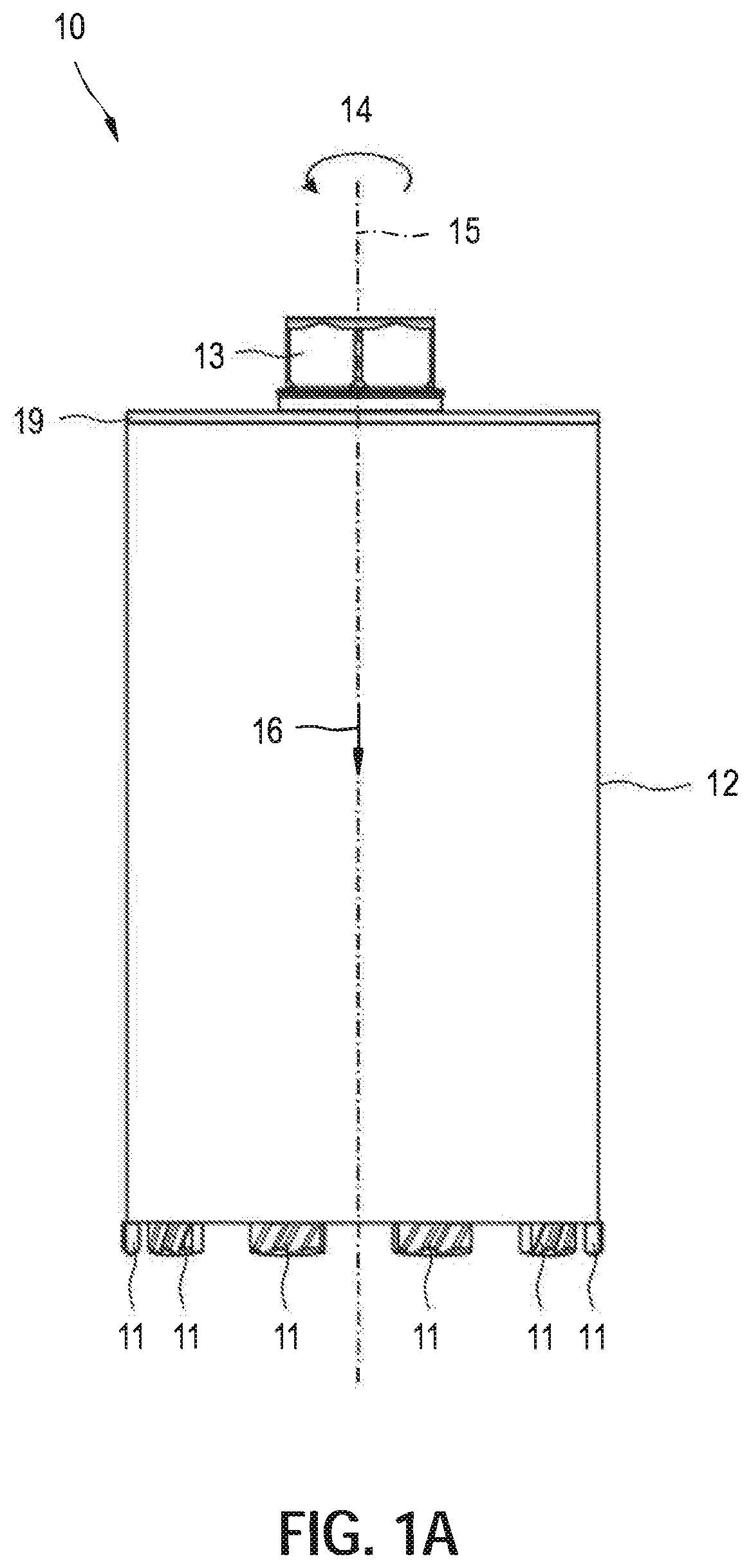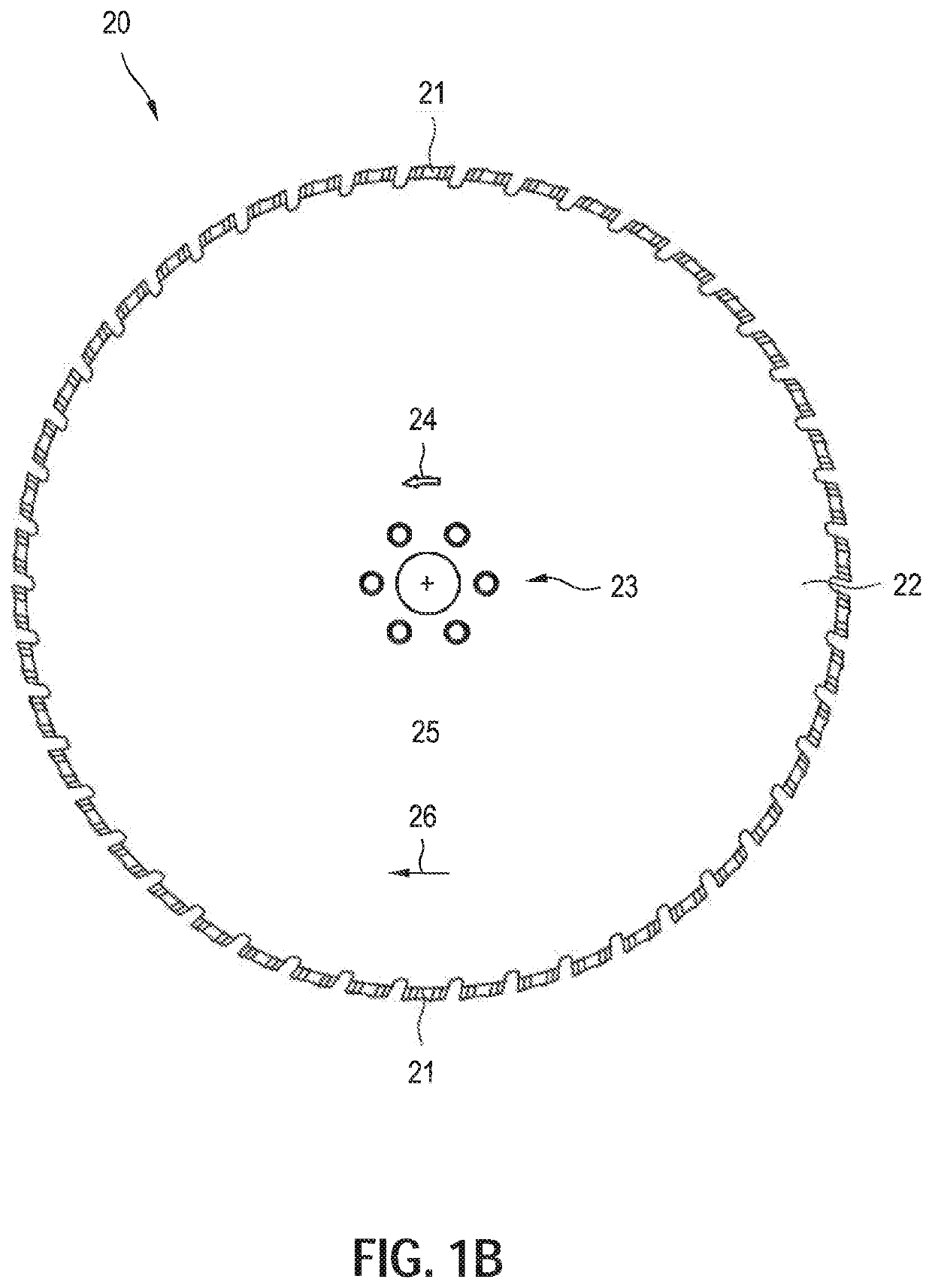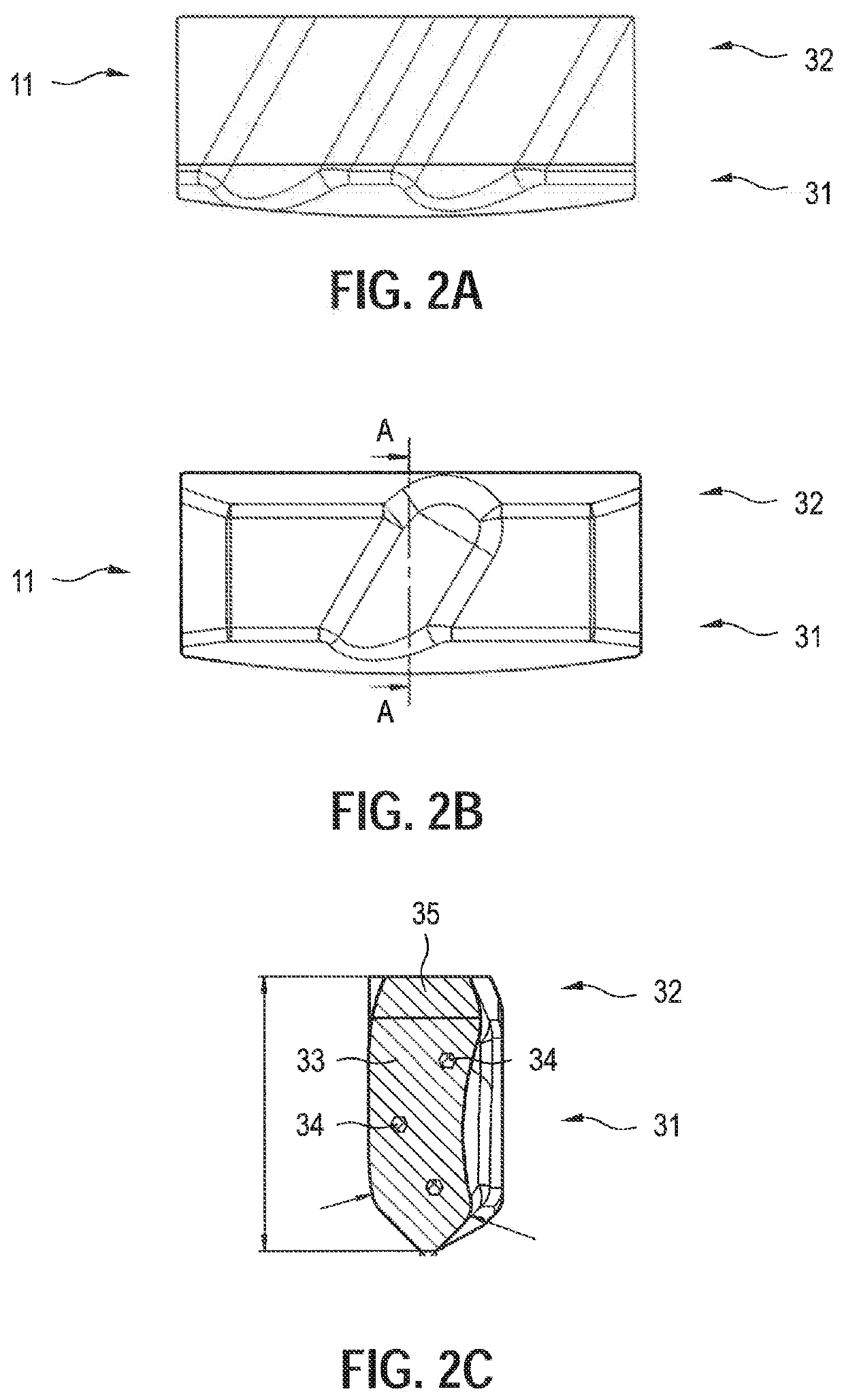Method for producing a machining segment for an abrasive machining tool
a technology of machining segment and abrasive, which is applied in the direction of adding to the production process, improving process efficiency, and increasing energy efficiency, etc. it can solve the problems of reducing the lifetime of the machining segment, material particles falling out prematurely, and damage to the mold, so as to improve the suit the flowability of the second metallic powder material is higher, and the effect of rapid flow
- Summary
- Abstract
- Description
- Claims
- Application Information
AI Technical Summary
Benefits of technology
Problems solved by technology
Method used
Image
Examples
first embodiment
[0045]FIGS. 2A-C show the drill segment 11 of the drill bit 10 of FIG. 1A in a view of the outside of the drill segment 11 (FIG. 2A), in a view of the inside of the drill segment 11 (FIG. 2B) and in a section along the section line A-A in FIG. 2B (FIG. 2C). In the machining of a workpiece with the drill bit 10, the outside of the drill segment 11 faces the drill hole and the inside of the drill segment 11 faces the drill core. The drill segment 11 of the drill bit 10 forms a machining segment which is produced by means of the method of the invention for producing a machining segment.
[0046]Since the drill segment 11 is welded to the drill shaft 12, the drill segment 11 is constructed from a machining zone 31 and a neutral zone 32 that are cohesively bonded by sintering. In the case of drill segments that are connected to the drill shaft 12 by soldering, for example, the neutral zone 32 can be dispensed with. The machining zone 31 has been produced from a first metallic powder materia...
second embodiment
[0048]FIGS. 3A-C show the saw segment 21 of the saw blade 20 of FIG. 1B in a three-dimensional view of the saw segment 21 (FIG. 3A), in a view of a first side of the saw segment 21 (FIG. 3B) and in a view of a second side of the saw segment 21 (FIG. 3C). The saw segment 21 of the saw blade 20 forms a machining segment which is produced by means of the method of the invention for producing a machining segment.
[0049]Since the saw segment 21 is welded to the main body 22, the saw segment 21 is constructed from a machining zone 41 and a neutral zone 42 that are cohesively bonded by sintering. In the case of saw segments that are connected to the main body 22 by soldering, for example, the neutral zone 42 can be dispensed with. The machining zone 41 has been produced from a first metallic powder material 43 and hard material particles 44, and the neutral zone 42 has been produced from a second metallic powder material 45, where the neutral zone 42 is free of hard material particles 44.
[0...
PUM
| Property | Measurement | Unit |
|---|---|---|
| lateral distance | aaaaa | aaaaa |
| compression pressure | aaaaa | aaaaa |
| compression pressure | aaaaa | aaaaa |
Abstract
Description
Claims
Application Information
 Login to View More
Login to View More - R&D
- Intellectual Property
- Life Sciences
- Materials
- Tech Scout
- Unparalleled Data Quality
- Higher Quality Content
- 60% Fewer Hallucinations
Browse by: Latest US Patents, China's latest patents, Technical Efficacy Thesaurus, Application Domain, Technology Topic, Popular Technical Reports.
© 2025 PatSnap. All rights reserved.Legal|Privacy policy|Modern Slavery Act Transparency Statement|Sitemap|About US| Contact US: help@patsnap.com



